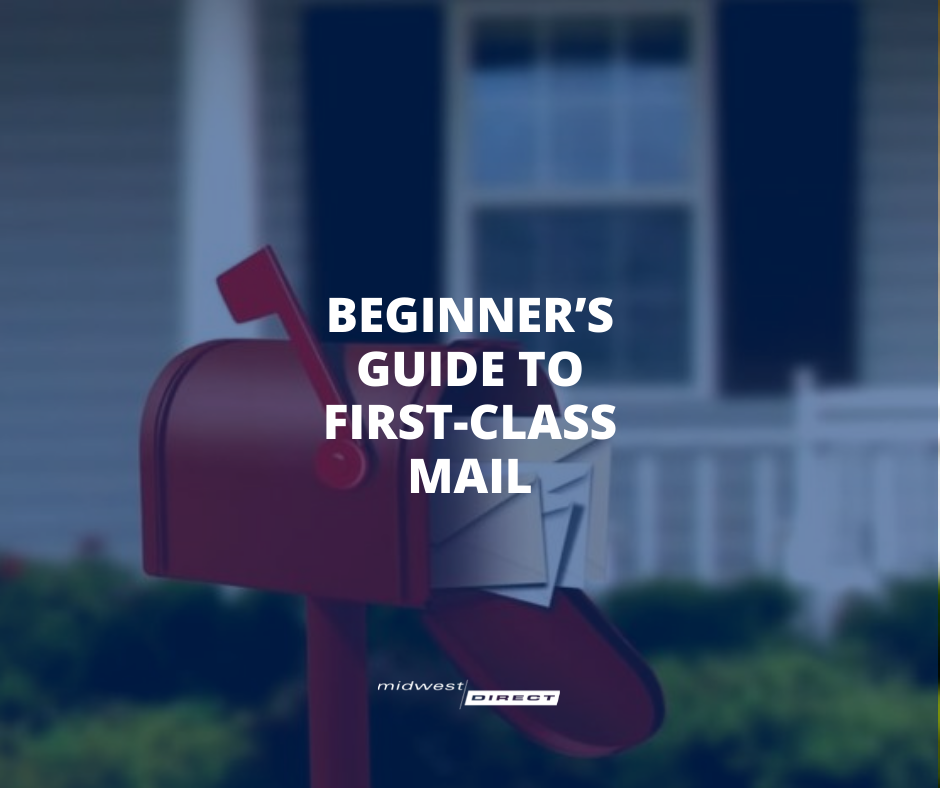What Is First-Class Mail?
First-Class mail is one of the most popular and efficient ways to send letters and flats. First-Class mail offers speedy delivery. USPS is delivering mail 1-3 days locally and up to 4 days nationally. If you are planning on sending out time-sensitive or personal information, First-Class mail is your best choice and is required for any invoices, credit cards, and other personalized correspondence. For organizations looking for consistent delivery with a limited margin of error, First-Class mail is the ideal choice.
What Are The Differences Between First-Class And Marketing Mail?
The primary differences between First-Class mail and Marketing mail are price, speed of delivery, options for mail forwarding, and returns on mail with outdated addresses. If you are planning on sending out time-sensitive or personal information, First-Class mail is your best choice and is required for any invoices, credit cards, and other personalized correspondence. First-Class mail is typically delivered in 1-3 business days.
Marketing mail does not have a guaranteed delivery time, although many resources estimate an average of under 5 business days locally and up to 13 days nationally. Additionally, Marketing mail does not offer free automatic returns and mail forwarding. All other factors aside, Marketing mail is significantly more cost-friendly than First-Class mail — if your delivery schedule is more flexible.
When Should I Use First-Class Mail?
First-Class mail is ideal for an organization looking for consistent delivery times while still staying within a reasonable budget. Invoices, credit cards, and personalized correspondence are required to be sent via First-Class mail. When processed First-Class, the mail is touched less and processed quickly, keeping the utmost integrity of the mailpiece. In addition, First-Class mail is given priority over Marketing mail, making it the best choice for time-sensitive mail — especially during peak mailing seasons. First-Class mailings are eligible for added delivery confirmation services such as Certified Mail®, so you can be sure your mail was delivered on time. There are studies that show First-Class mail, arriving in an envelope with a return address and stamp are more likely to be opened by recipients. This makes First Class Mail a favorite for organizations who want to improve the odds that their correspondence is opened.
What Are The Advantages And Disadvantages Of First-Class Mail?
Advantages:
- Delivery times for First-Class mail remain consistent, even during peak mailing times because the USPS gives it priority over other classes of mail.
- Sending mail First-Class can help mitigate the costs of returned mail. If a First-Class mailpiece is undeliverable, the USPS will forward the mail to the correct address, or return it to the sender, sometimes at no charge.
- Consumer perception that this mail is “important” and is likely to be opened and read.
- Add-ons like Certified Mail® provide evidence of mailing so that you know when your items are delivered to the correct recipient. This also includes information about the date and time of delivery or attempted delivery.
- Insurance for loss or damage up to $5,000 for merchandise.
Disadvantages:
- If cost is the primary concern (especially for large volume mailers) and the mailings do not have time-sensitive information, First-Class may be an unnecessary expense.
- It is required to pay the higher First-Class rate on invoices, credit cards, and personalized correspondence that are mandated to be sent via First-Class mail.
- Weight and size restrictions may prevent a mailpiece from sending at the First-Class rate. If your piece does not meet the requirements below it will be charged parcel prices.
Is First-Class Mail The Same As Priority Mail?
The only commonality between First-Class and Priority Mail is that delivery is expected within 1-3 days. First-Class mail is typically used for standard size envelopes, postcards, flats, and lightweight packages. First-Class mail has specific weight and size requirements in order to be sent at the First-Class price. The rates of First-Class mail flats are also significantly less than Priority mail rates.
Priority Mail is more popularly known for parcels, and is much better for individual use, rather than bulk mailings, there are no commercial rates for Priority Mail. Priority Mail sizes start much larger than First-Class mail, they also offer Flat-Rate pricing for specifically sized parcels.
What Are The Requirements For First-Class Mail?
The full list of requirements can be found here.
- Minimum weight: None
- Flats maximum weight: 13 oz. (when over this, it becomes Priority Mail)
- Letter maximum weight: 3.5 oz.
- Minimum quantity for commingle pricing: 500 pieces (or use a presort house and there are lower minimums)
- Presort savings & requirements: Must be grouped by zip code, NCOA updated and CASS certified which can be done by your mail service provider. Because it costs less to process and deliver, savings can be up to 30% in postage.
If you still feel stuck and have questions, or are ready to start saving time and money on your mailings, contact us today to get started. Our mail professionals are here to help you make the right mail choice for your individual needs.

